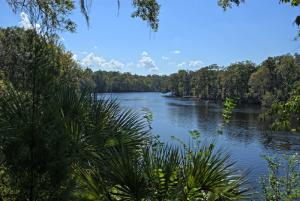Looking for design inspiration? Browse our curated collections!
July 16th, 2013 - 07:50 AM

Most photographers who discover the joy HDR photography right away assume they need to capture 58 images of the same scene to get a better HDR capture. Not true, as you probably already know, most digital cameras capture a range of tonality and light from about 2.5 f/stops up from the “perfect” exposure to 2.5 f/stops down from the “perfect” exposure in an average scene. That means that you already have an image which doesn’t necessitate you capturing additional images one f/stop up and down, nor do you need to capture two f/stops up or down. Those exposures are already in your image.
Remember, the whole purpose of HDR photography is to capture DETAILS in all the bright areas as well as all the dark areas of your image. Otherwise you end up with white or black blobs with no details in your images.
So if you want to capture more range and get more detail in your HDR image start by following these steps.
1. Take a light meter reading in the brightest area of your image, probably something white
2. Take a light meter reading in the darkest area of your image, probably something black
3. You can use a spot meter reading from your camera if you don’t have a hand held light meter
4. Now compare the two readings are they within 5 f/stops of each other or less
5. Then you can tone map this image and get a good HDR image
6. If they are more than 5 f/stops apart then this is when you need to capture more images
7. If your camera allows you to set a bracket to capture more than one image, then set the bracket to capture, say one image 3 f/stops above and 3 f/stops below and one properly exposed image
8. This provides for 6 f/stops of range, if you need more set your camera accordingly 4 above and 4 below with one properly exposed to cover a difference of 8 f/stops or whatever you need to capture the entire range of exposures in your image.
This technique will give you the option of shooting a wide range of light without having to shoot mass quantities of images for each capture. If your camera doesn’t have a bracket setting you can do it manually, but remember it is better to reduce the movement of the camera so your software doesn’t have to try to compensate for movement as well as capturing your HDR ranges.
I probably should have put this up top but that’s okay, because I’m assuming you will ready the whole blog post first then go out and try it. Make sure you use a tripod or a firm platform to place your camera on to reduce the camera movement between bracketed captures.
The other thing to consider is using a technique to let you know when you are starting a new set of images for an HDR capture. For example one of the techniques I use is to place my hand in front of the camera and take a picture of it (not in bracket mode), then I set my bracket mode, take my pictures for a specific capture, turn my bracket mode off and take another picture of my hand. That way when I get back to my computer, I know that the images between pictures of my hand belong together for one HDR capture. I tried it without a system and I merged some images together that weren’t supposed to be together and they come out really strange.
Now all you have to do is use your HDR software to merge you images into one and then create the magic that is HDR photography. Remember, as with all photo editing, the less adjusting the more realistic it will look, the more adjusting you do, the more people will realize you have “Photoshopped” the image.
The image to the left of the Swuanee River near Fanning Springs was taken with 3 images and notice the detail in the clouds and in the shadows of the trees.
Comments
Frank Feliciano
10 Years Ago
Boynton Beach, FL
Kathi, I have used a couple and found that PS works just fine and so I don't even have any installed in my computer. It has been so long since I have used any other software that I don't remember which ones I used. The best thing for you to do is a google search for "High Dynamic Range Free Software" and you will get hundreds of possibilities.